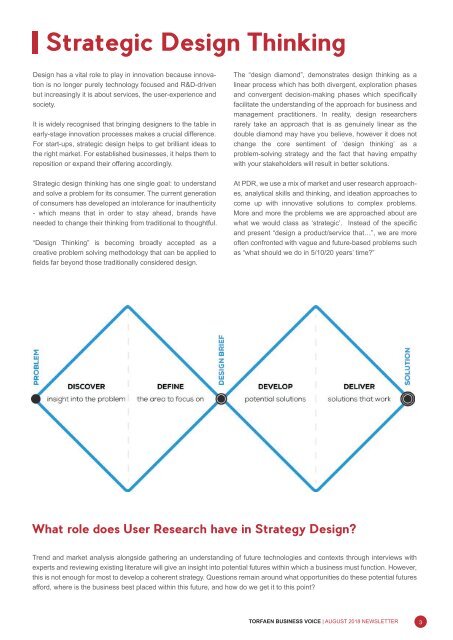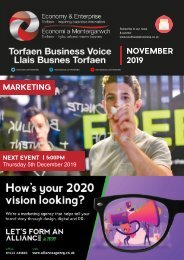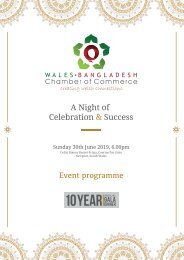TBV August 2018 - Full Edition
TBV August 2018 - Full Edition
TBV August 2018 - Full Edition
You also want an ePaper? Increase the reach of your titles
YUMPU automatically turns print PDFs into web optimized ePapers that Google loves.
Strategic Design Thinking<br />
Design has a vital role to play in innovation because innovation<br />
is no longer purely technology focused and R&D-driven<br />
but increasingly it is about services, the user-experience and<br />
society.<br />
It is widely recognised that bringing designers to the table in<br />
early-stage innovation processes makes a crucial difference.<br />
For start-ups, strategic design helps to get brilliant ideas to<br />
the right market. For established businesses, it helps them to<br />
reposition or expand their offering accordingly.<br />
Strategic design thinking has one single goal: to understand<br />
and solve a problem for its consumer. The current generation<br />
of consumers has developed an intolerance for inauthenticity<br />
- which means that in order to stay ahead, brands have<br />
needed to change their thinking from traditional to thoughtful.<br />
“Design Thinking” is becoming broadly accepted as a<br />
creative problem solving methodology that can be applied to<br />
fields far beyond those traditionally considered design.<br />
The “design diamond”, demonstrates design thinking as a<br />
linear process which has both divergent, exploration phases<br />
and convergent decision-making phases which specifically<br />
JULY - AUGUST<br />
facilitate the understanding of the approach for business and<br />
management practitioners. In reality, design researchers<br />
SEPTEMBER<br />
rarely take an approach that is as genuinely linear as the<br />
double diamond may have you believe, however it does not<br />
change the core sentiment of ‘design thinking’ as a<br />
Manufacturing<br />
problem-solving strategy and the fact that having empathy<br />
with your stakeholders will result in better solutions.<br />
At PDR, we use a mix of market and user research approaches,<br />
analytical skills and thinking, and ideation approaches to<br />
come up with innovative solutions to complex problems.<br />
More OCTOBER and more the problems we are approached about are<br />
what we would class as ‘strategic’. Instead of the specific<br />
and present “design a product/service that…”, we are more<br />
often confronted with vague and future-based problems such<br />
as “what should we do in 5/10/20 years’ time?”<br />
What role does User Research have in Strategy Design?<br />
Trend and market analysis alongside gathering an understanding of future technologies and contexts through interviews with<br />
experts and reviewing existing literature will give an insight into potential futures within which a business must function. However,<br />
this is not enough for most to develop a coherent strategy. Questions remain around what opportunities do these potential futures<br />
afford, where is the business best placed within this future, and how do we get it to this point?<br />
TORFAEN BUSINESS VOICE | AUGUST <strong>2018</strong> NEWSLETTER 3


















